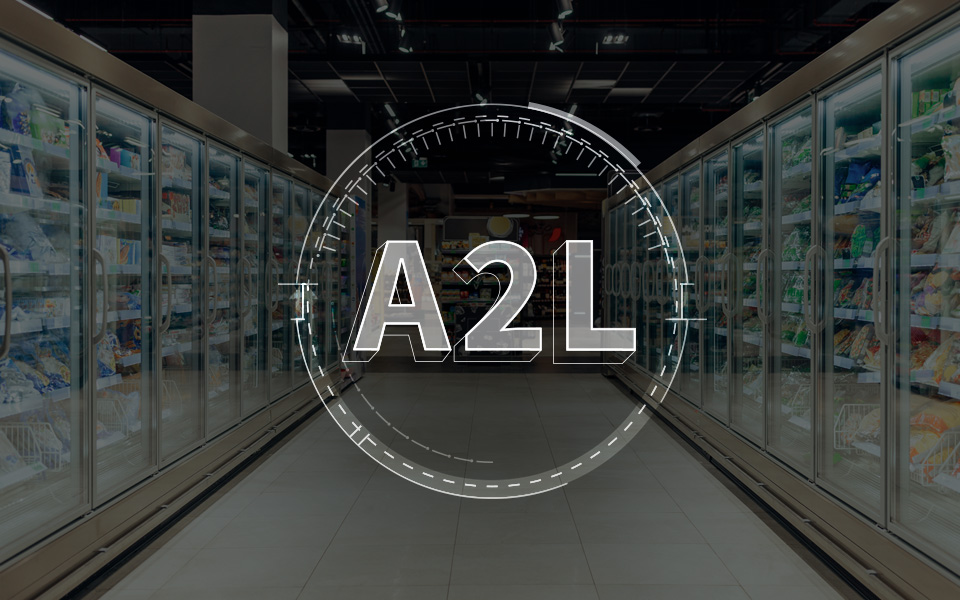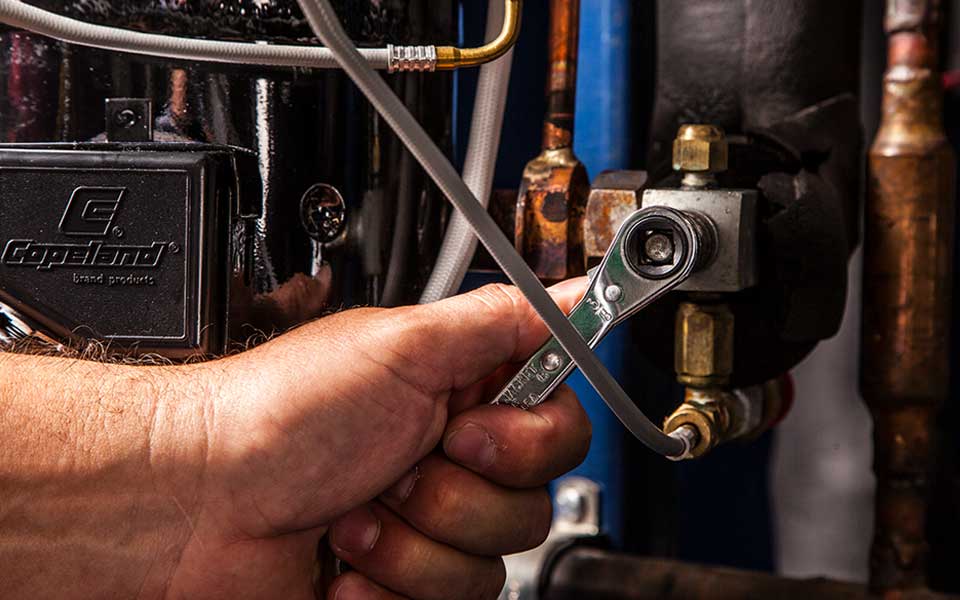Commercial refrigeration architectures are changing. Environmental regulations and corporate sustainability objectives are driving the need for next-generation refrigeration technologies. Today, most commercial refrigeration end users are still operating legacy, centralized direct-expansion (DX) rack systems — which contain refrigerants that either have high global warming potential (GWP) or ozone depletion potential (ODP). In our most recent E360 Webinar, Diego Marafon, director of product management at Emerson, and I discussed new refrigeration architectures that utilize eco-friendly refrigerants.

In many countries, regions and U.S. states, the transition from high-GWP refrigerants is underway. While legacy refrigerant options such as hydrofluorocarbon (HFC) R-404A are being phased down, hydrochlorofluorocarbons (HCFCs) such as R-22 are being phased out. To meet sustainability targets, future refrigeration options will utilize a variety of emerging lower-GWP refrigerants, including A1s, A2Ls and natural options such as CO2 and propane.
End users must evaluate a wide range of operational, maintenance and economic criteria when selecting an alternative refrigerant or future refrigeration architecture. Based on Emerson-sponsored research on commercial refrigeration end users, we’ve classified these criteria into six categories called the Six S’s: simple to operate and maintain; environmentally and economically sustainable; stable, reliable performance; secure in terms of both technology and safety perspectives; serviceable without requiring specialized skills or training; and equipped with smart technologies for internet of things (IoT) communication. The levels of importance that each end user places on these factors will determine their selection criteria and the types of systems that meet their business objectives.
Emerging architectures and technologies
Aside from CO2 systems, which have been in use for more than a decade, many of the emerging technologies take a decentralized or distributed approach to system architectures. Overall, this strategy moves the refrigeration equipment closer to the refrigerated cases, requires much less refrigerant charge (and piping), and offers a higher degree of flexibility over centralized DX systems. Here is a brief description of some of the decentralized or distributed architectures we reviewed in the webinar:
Low-charge small scroll racks — These systems have been in place for more than 20 years due to their equipment placement flexibility. Multiple-rack units can be placed in proximity to refrigerated loads, allowing suction pressures to be optimized and drive energy efficiencies. Refrigerant charges are smaller, so leaks can be contained to each rack’s individual circuit. They are capable of using multiple refrigerants with varying lower-GWP ratings.
Outdoor condensing units (OCUs) — This well-known approach has been proven for decades and is evolving to meet modern refrigeration needs. OCUs have traditionally been used for smaller refrigeration loads — one unit per load — and many retailers use multiple OCUs to cover individual loads throughout a store. Lower-GWP A1 refrigerants such as R-448/9A can be used for low-temperature applications; low- or medium-pressure refrigerants can be used for medium-temperature applications.
Variable-capacity OCUs — Digital compressors which provide variable-capacity modulation are now being used in OCUs to service multiple refrigeration loads per store. This added range of capacity greatly expands upon traditional remodel and rebuild options — in convenience stores, restaurants, small supermarkets, and click-and-collect operations — and offers the ability to replace three separate condensing units with one. Locating these OCUs in proximity to the refrigerated loads helps keep charge low, allowing them to meet even the most stringent environmental regulations. Variable-capacity modulation enables precise temperature control and excellent load matching capabilities for maximum energy efficiencies. See the Copeland™ digital outdoor refrigeration unit, X-Line Series for more information.
Distributed micro-booster — This hybrid indoor/outdoor architecture utilizes proven booster technology — typically found in CO2 systems, however new innovative concepts permit the use of low GWP, low-pressure A1 refrigerants for both low- and medium-temperature loads while offering a familiar operation and maintenance footprint. The system utilizes outdoor condensing units for medium-temperature coolers and low-temperature compressors which are located directly on or above the frozen cases. Low-temperature compressors discharge into the nearest medium-temperature suction group, thereby eliminating the need to discharge all the way out to a remote condenser. This allows refrigerant charges and pressures to stay very low, while utilizing one low-GWP A1 refrigerant such as R-513A. Emerson has tested these systems in multiple locations and configurations, where they deliver exceptional performance and energy efficiencies.
Indoor distributed architecture — This flexible configuration utilizes self-contained condensing units located on or near refrigerated cases, islands or prep tables — with refrigerant options, including low-GWP A1s and R-290 (subject to allowable charge limits). Stores with multiple cases can be connected via a shared water or glycol loop to extract heat from each unit and divert it to a remote condenser/cooler. The inherent modular nature of this architecture limits leak rates and keeps charges very low while enabling a very simple, reliable and scalable operational footprint. See the award-winning Copeland Indoor Modular Solution for an end-to-end modular capability that provides seamless integration of refrigeration equipment with Emerson facility controls.
For more detailed information on any of these refrigeration architectures or their enabling technologies, view this webinar in its entirety.

A2L Refrigeration Overview — Systems, Safety and Servicing Considerations
As recent regulations set the stage for the use of A2L refrigerants in HVACR, commercial...

Servicing the Next Generation of Lower-GWP Refrigerants
As the phasedown of hydrofluorocarbon (HFC) refrigerants ramps up over the next several years,...

Improve Food Safety by Shifting to Proactive Measures
*Emerson’s Climate Technologies business is now a new standalone company – Copeland. Over the next...
